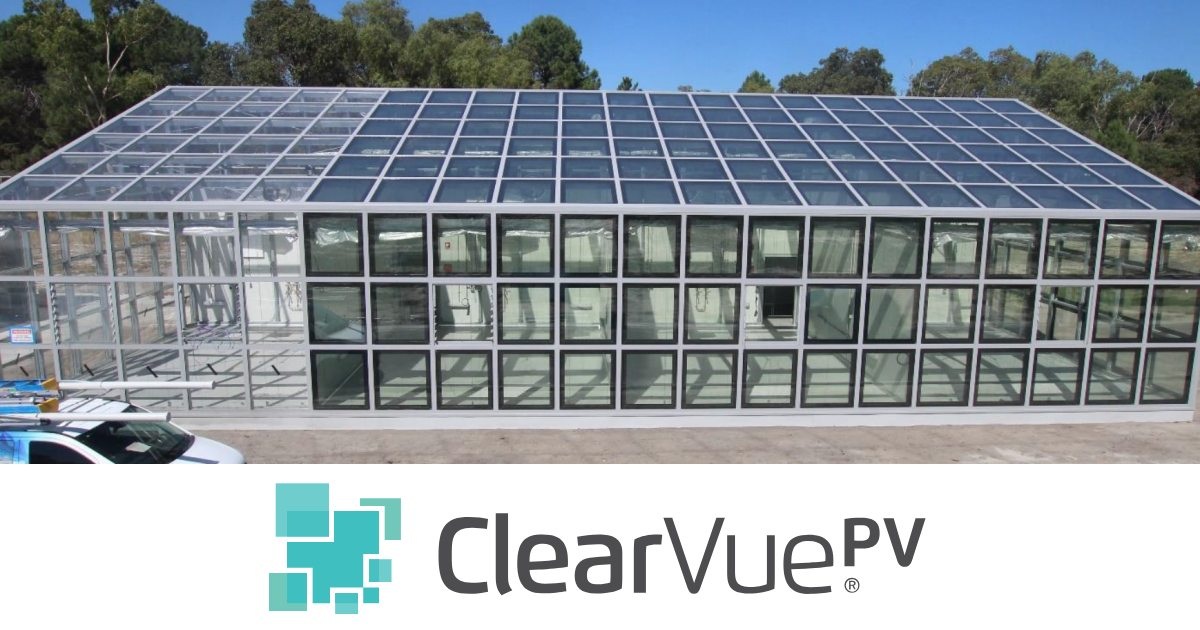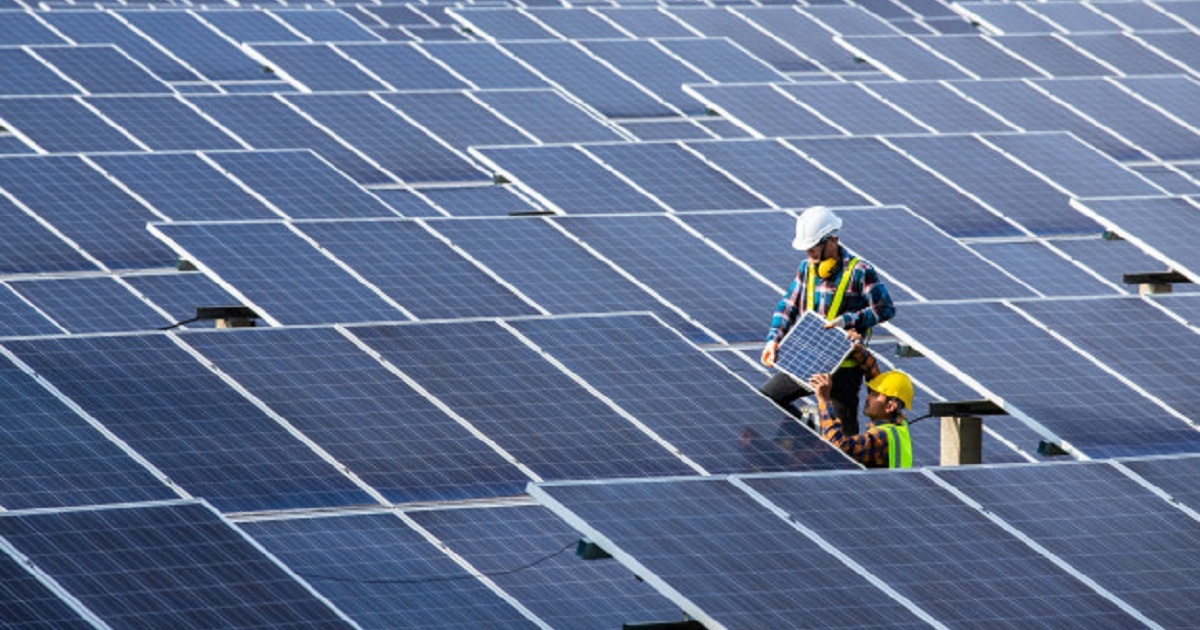
Solar+Storage
Article | June 14, 2022
The pandemic emptied out most of America’s offices as workers across the country set up home workstations. Although this looked to be a temporary situation for many, it has become clear that many workers are choosing to continue to work from home, and many businesses are embracing this concept as well. If you’re one of those individuals, you may want to consider adding solar to your home.
A shift in power usage
According to the National Bureau of Economic Research, “Americans spent $6 billion more on at-home power consumption from April to July 2020 than during normal times, nearly offsetting a decline in business and industrial demand.” The increase in residential consumption was fueled by increased home heating and cooling demands, workers participating in virtual meetings, running computers, printers, lamps, and other electronic devices all day long. This has resulted in a shift in energy costs from corporations to employees, with many workers seeing significant increases in their home utility bills.
Capitalizing on higher demand to maximize your system size
Solar can be a great way to offset the costs of your home's energy demands. Because your consumption is currently higher than it would be if you were working at your company's office, you have the ability to install a system that will more than cover your electricity needs if and when you do return to a corporate office setting. Although your increased usage means you'll need to add a more extensive solar photovoltaic system to your home to do this, it also provides you with an opportunity to maximize your system's size to meet your needs.
Incentives and savings
The federal solar tax credit, also known as the investment tax credit (ITC), allows you to deduct 26 percent of the cost of installing a solar energy system from your federal taxes. However, that number falls to 22 percent in 2023 and goes away in 2024 for residential projects, while commercial projects are reduced to 10 percent ongoing. The ITC applies to both residential and commercial systems and there is no cap to the size of the system the ITC can be applied to. Making plans now to invest in a solar PV system for your home can be a great way to continue to reap the rewards of working from home without it having a significant negative impact on your monthly utility bill.
Read More

Sustainability
Article | July 7, 2023
Renewable energy is the energy generated from natural resources on Earth that are neither limited or exhaustible, such as wind and sun. Thus, renewable energy is an alternative to conventional energy based on fossil fuels and is generally less harmful to the environment.
Some Sources of Renewable Energy
Solar:
Solar energy is created by capturing sunlight's radiant energy and turning it into heat, electricity, or hot water. Photovoltaic (PV) systems utilize solar cells to convert direct sunlight into energy.
The significant advantage of solar energy is that it is functionally infinite. There is an infinite supply of solar energy with the technology to harvest it, making fossil fuels obsolete. Using solar energy instead of fossil fuels can also help improve public health and environmental conditions. In addition, solar energy has the potential to eliminate energy expenses in the long run, as well as decrease your energy bills in the short term. Many government, state, and local governments also provide rebates or tax credits to encourage investment in solar energy. To know more about Solar Energy, click here.
Although solar energy can save you money in the long term, it has a high upfront cost out of reach for most households. In addition, for personal houses, homeowners should also have enough sunlight and space to install their solar panels, restricting who can realistically adopt this technology on an individual level.
Wind:
Wind farms use turbines to generate wind energy and convert it to electricity. There are many types of systems used to convert wind energy, and each one is unique. Commercial-grade wind-powered generating systems can power a wide range of organizations, while single-wind turbines are utilized to complement current energy organizations. Utility-scale wind farms, which are purchased on a contract or wholesale basis, are another option. Wind energy is technically a kind of solar energy. Wind is caused by temperature variations in the atmosphere and the rotation of the Earth, and the geography of the planet.
Wind energy is a clean energy source, which means it does not damage the environment in the same way other types of energy do. Wind energy does not emit carbon dioxide or any other hazardous pollutants that can degrade the environment or damage human health, such as smog, acid rain, or other heat-trapping gases. Investment in wind energy technology can also lead to new employment opportunities and job training, as farm turbines should be serviced and maintained to remain operational.
Wind farms are often constructed in rural or isolated locations, far from busy towns where electricity is most required. Wind energy must be transmitted through transition lines, which raises the cost. Even though wind turbines produce relatively little pollution, some cities are opposed to them because they dominate skylines and create noise. In addition, wind turbines can pose a danger to nearby animals, such as birds, who are occasionally killed when they collide with the turbine's arms while flying.
Hydroelectric:
When it comes to hydroelectric power, most people think of dams. Pumped-storage hydropower is the process through which water flows through the turbines of a dam to generate energy. Run-of-river hydropower utilizes a canal to funnel water through rather than a dam to power it.
Hydroelectric power is very flexible since it can be generated utilizing both large-scale projects such as the Hoover Dam and small-scale projects such as underwater turbines and lower dams on rivers and streams. In addition, because hydroelectric power does not emit pollutants, it is a far more ecologically beneficial energy source for our environment.
The majority of hydroelectric power plants use more energy than they generate. To pump water, the storage systems may need to utilize fossil fuels. Although hydroelectric power does not contaminate the air, it disrupts rivers. It harms the animals that dwell in them by changing water levels, currents, and migratory routes for many fish and other freshwater ecosystems.
Geothermal:
Geothermal heat is heat trapped under the Earth's crust due to the Earth's creation 4.5 billion years ago and radioactive decay. Large quantities of this heat can sometimes escape spontaneously, but only all at once, resulting in well-known phenomena like volcanic explosions and geysers. This heat can be collected and utilized to generate geothermal energy by utilizing steam generated by heated water pumping under the surface, which rises to the surface and can power a turbine.
Geothermal energy is not as common as other forms of renewable energy, but it has considerable energy supply potential. In addition, it has a little environmental impact because it can be constructed underground. As geothermal energy is replenished naturally, it is not in danger of depletion.
When it comes to the drawbacks of geothermal energy, the cost is a significant issue. Not only is the infrastructure expensive to construct, but it is also vulnerable to earthquakes in some parts of the world.
Is renewable energy capable of powering the future?
Renewable energy technologies already account for approximately 26% of total global power, and the International Energy Agency (IEA) predicts that this will rise to 30% by 2024. According to the IEA, by 2024, the world's renewable energy capacity will have increased by 1,200 GW, which is equivalent to the capacity of the whole United States.
Expert analysis indicates that a completely sustainable energy system can be achieved worldwide over the next 30 years; the difficult part is persuading countries to change their ways.
What is the significance of renewable energy in the future?
There are many reasons why renewable energy is critical for the future, particularly given the negative impact that fossil fuels have on our world. This includes, among other things, air and water pollution, habitat and wildlife loss, and greenhouse gas emissions that contribute to global warming. Here are a few examples of why renewable energy is so important:
Lowers air pollution: By lowering air pollution, renewable energy may help improve people's health worldwide. Air pollution is a significant environmental problem, particularly in metropolitan areas and developing countries, and the World Health Organization estimates that 7 million people die prematurely due to inhaling contaminated air each year.
Lowers the danger of floods and droughts: Using renewable energy can also lower the risk of floods and droughts throughout the world. For example, many gallons of water are required to operate power plants that burn fossil fuels, leading to droughts in many low-rainfall nations. In contrast, climate change induced by the combustion of fossil fuels produces greater rainfall in other areas, resulting in catastrophic floods.
Promotes local economies: The development of renewable energy technologies also contributes to creating new employment and financing for local economies. As a result, more employment in renewable energy is being generated every day, and they are only expected to grow more secure as technology advances.
Lower long-term costs: Clean energy sources are becoming more appealing investment possibilities than fossil fuels. With the growing popularity of renewable energy sources like solar and wind power, investment is low risk, even with hefty initial installation costs. They can effectively generate electricity "for free" for decades after installation.
A future powered by renewable energy will result in a more sustainable environment and help many local economies in ways that fossil fuels cannot.
What is the best future renewable energy source?
Solar energy and wind power, together with hydropower, are considered the greatest renewable energy sources for powering our future planet. They are the cleanest renewable resources and are ideal for household, industrial, and national grid uses.
They can offer limitless quantities of clean energy to the world, but they can also boost local economies. Wind power technology has already resulted in a significant rise in employment and helps to put money back into local communities, with additional jobs being generated with each installation.
Solar energy can benefit everyone who has sufficient space for PV panels, and it is much less intrusive than wind turbines. And, although initial installation prices can be high, they will start to fall as solar becomes more common.
Is it possible for the world to survive on 100% renewable energy in the future?
The world may survive on 100% renewable energy in the future, but this will not be without challenges. To read more about the challenges in renewable energy click here. Each nation will have to go through its transition phase, which will be relatively simple for some and more difficult for others. Others may be hesitant even to begin the transition if their economy is highly dependent on fossil fuels.
The world's future can be unpredictable, and it's impossible to tell if it's possible to live completely on renewable energy. Still, we can help make the planet a better place by switching our homes' electricity to renewable energy.
In the future, how efficient will renewable energy be?
Renewable energy efficiency is determined by how much energy can be generated in a given period and how much it costs to generate this energy. Despite the fact that all renewable energy technologies have high initial costs, the costs of generating energy are considerably lower than the costs of obtaining fossil fuels.
With the continuous advancement of renewable energy technology, this efficiency will only increase, bringing us closer to a bright future for renewable energy.
What are the future benefits and drawbacks of renewable energy?
Benefits:
Renewable energy technologies have an infinite supply — as long as we have the sun, wind, water, and natural heat, we have renewable energy technologies.
Reduced global warming impacts, such as floods, severe storms, droughts, and other extreme weather conditions.
Fewer air contaminants, which lead to improved respiratory health.
Reduced greenhouse gas emissions result in a more stable climate.
More employment for local areas.
More robust supply, which assists in the elimination of power outages.
Enhanced accessibility.
Lower energy costs, particularly with renewable energy prices falling.
Drawbacks:
Expensive initial installation costs.
Intermittent - depending on the renewable energy source, they will not provide electricity 24 hours a day, seven days a week. Solar energy, for example, cannot be produced at night, and wind is not always powerful enough to spin a turbine.
More advancements in storage solutions are required - renewable energy storage can be costly, but this is expected to improve as technology advances.
Geographical constraints - some areas will be more suited to renewable energy sources than others.
What factors will influence the future of renewable energy?
The environmental advantages and the cost of transition are the two most important factors determining the future of renewable energy.
The benefits of renewable energy sources often exceed the drawbacks, yet the high initial costs frequently discourage people from investing. Luckily, as environmental problems become more generally recognized, renewable energy prices, including installation costs, are falling, providing greater incentive to switch to renewable energy sources.
So, what does the future of renewable energy hold?
Renewable energy is expected to grow in popularity over the next decade, attempting to minimize the impacts of climate change. This may take some time, but we will have to switch to renewable energy to fight against climate change and protect our environment.
FAQ
Why is renewable energy the future?
Alternative energy sources emit much less Carbon dioxide than natural gas, coal, and other fossil fuels. Switching to renewable energy sources for electricity production will benefit the environment by delaying and reversing climate change.
Is renewable energy a good investment for business?
There are many benefits to investing in renewable energy sources for businesses, including increased marketing possibilities, fewer emissions, cheaper energy costs, and many more. Businesses must lead the way in becoming more sustainable by expanding their usage of renewable energy.
What is the best renewable energy source for the future?
Solar energy and wind power, together with hydropower, are considered the greatest renewable energy sources for powering our future planet. They are the cleanest renewable resources and are ideal for household, industrial, and national grid uses. They can offer limitless quantities of clean energy to the world, but they can also boost local economies. Wind power technology has already resulted in a significant rise in employment and helps to put money back into local communities, with additional jobs being generated with each installation.
{
"@context": "https://schema.org",
"@type": "FAQPage",
"mainEntity": [{
"@type": "Question",
"name": "Why is renewable energy the future?",
"acceptedAnswer": {
"@type": "Answer",
"text": "Alternative energy sources emit much less Carbon dioxide than natural gas, coal, and other fossil fuels. Switching to renewable energy sources for electricity production will benefit the environment by delaying and reversing climate change."
}
},{
"@type": "Question",
"name": "Is renewable energy a good investment for business?",
"acceptedAnswer": {
"@type": "Answer",
"text": "There are many benefits to investing in renewable energy sources for businesses, including increased marketing possibilities, fewer emissions, cheaper energy costs, and many more. Businesses must lead the way in becoming more sustainable by expanding their usage of renewable energy."
}
},{
"@type": "Question",
"name": "What is the best renewable energy source for the future?",
"acceptedAnswer": {
"@type": "Answer",
"text": "Solar energy and wind power, together with hydropower, are considered the greatest renewable energy sources for powering our future planet. They are the cleanest renewable resources and are ideal for household, industrial, and national grid uses. They can offer limitless quantities of clean energy to the world, but they can also boost local economies. Wind power technology has already resulted in a significant rise in employment and helps to put money back into local communities, with additional jobs being generated with each installation."
}
}]
}
Read More

Solar+Storage, Strategy and Best Practices
Article | September 17, 2022
A high-tech greenhouse comprised mainly of solar glass generating electricity to help run it was officially opened yesterday in Western Australia.
ClearVue Technologies Limited’s solar glass involves a nanoparticle interlayer and spectral-selective coating on the rear external surface that enables 70% of natural light to pass through while redirecting infrared and UV light converted to infrared to the edge where it is harvested by solar cells. ClearVue says each 1m2 of its window product is currently rated to generate 30 watts-peak of electric power, but also mentions a new-generation product with the proven ability to generate 40 watts peak per m2 to be available sometime this year.
Read More

Solar+Storage
Article | May 27, 2021
We’ve talked a bit about the functioning of solar panels, the mechanisms behind them, and the best panels suited for the average Indian household. Check them out for the starters. For this article, we’re detailing a complete guide to the components and installation of a solar system.
Solar panels are all but a part of the complete setup of a functioning solar system. It is the basic building block of the system, but there’s more to it than just a silicon wafer panel. The other necessary components include Solar Inverters, Batteries (in a select type of system) and Panel Structure/Stands, and other accessories.
Read More